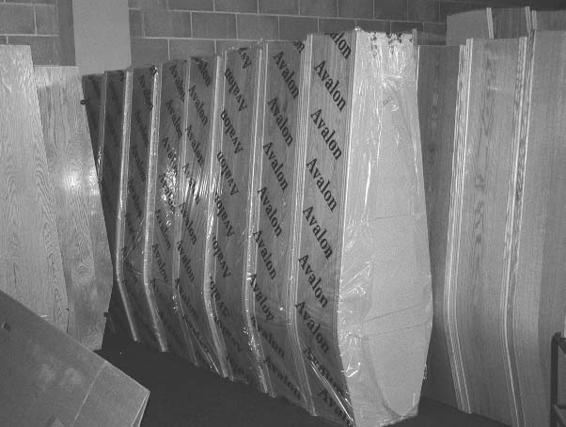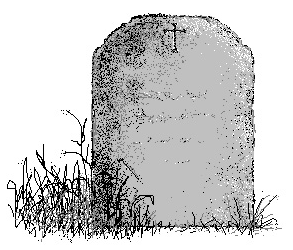Reading Six Feet Under: TV to Die For (33 page)
Read Reading Six Feet Under: TV to Die For Online
Authors: Kim Akass,Janet McCabe
Tags: #Non-Fiction

‘It was a sex thing. Not a gay thing’ (‘The Opening’, 3:9). Yet, under the terms of heteronormativity, there is no non-normative sexuality that is not in some sense ‘gay’. Or, to put it in other terms, the sexual tension between Russell and Olivier may not represent a future ‘gay relationship’, but it further erodes Claire’s confidence in the notion
– derived from his refusal of a gay identity – that he is straight.
(Along the same lines, one sees no reason to conclude that Olivier is gay, but he is certainly not simply straight.) Claire is discomfited by the fact that Russell’s sexuality stubbornly remains so hard to read. She insists with some urgency that Russell declare precisely whether he is gay or not, ignoring along the way the plain fact that Russell himself does not seem to know. After the revelation of his encounter with Olivier, his claim to be uncertain about his own sexuality only angers Claire all the more (‘Everyone Leaves’, 3:10). And she will not allow such confusion to stand in tandem with Russell’s positive and forceful declaration of his love for her. For Claire, still reading Russell through modern heteronormative categories, Russell cannot love her and be confused at the same time. Claire’s insistence not just to read but
to define
Russell’s sexuality probably has much to do with the way she understands her own sexuality. She can reconcile her current feelings for Russell and his past feelings for her only when she ‘knows’ the ‘truth’ about his sexuality. If he is gay, then their relationship was a front. If he is straight, then his feelings for her may have been real and their sexual encounter would be validated. But his queerness queers their seemingly heterosexual relationship (Williford 2004).
If we use the crib of heteronormativity, then it seems easy (though still confusing) to read Russell’s sexuality: he is either gay or straight, and he just cannot figure it out for himself. Once he does, it will be incumbent upon him either to a) come out, or b) begin to live a consistently and thoroughly heterosexual life. If, 185
READING
SIX FEET UNDER
instead, Russell merely denies a gay identity once again, or if he tries to claim a straight one, he will find himself back in the third modern category: ‘confused’. To reconcile oneself to modern categories requires a recognition that one cannot come out as straight: one can either
be/act/perform
straight or come out as gay. One could complete this line of logic as follows. Russell refuses to commit to a heterosexual identity while remaining committed to a relationship with Claire.
His refusal of identity, however, causes Claire to reject him. His very queerness halts their heterosexual relationship because of the fact that his sexuality cannot be clearly
defined
by his actions or feelings. For Claire, Russell’s sexual ambiguity precludes the possibility of a relationship with him. For Russell, being with Claire does not affirm a sexual identity; their ‘heterosexual’ relationship does not really consolidate heterosexuality for Russell. For this very reason, it constitutes an extreme threat to heteronormativity. In other words, their relationship proves to be ‘more queer’ than a homosexual relationship because of its challenge to those categories themselves.
If we read Russell against the grain of heteronormativity, then we come to a completely different conclusion from the ‘gay or straight’
options found within the terms of heteronormativity.
We cannot read
Russell’s sexuality
. Interpreted through the framework of modern categories, his sexuality remains
illegible
. Russell experiences his own sexuality as ‘other’ than the modern categories, and his presence on the show can serve to denaturalise those categories for us (something much easier for us to do than for Claire, because we are not in love with Russell). Russell’s refusal to come out or to effectively perform heterosexuality leads to a rejection of the terms of heteronormativity; he refuses the only things he possibly can be, gay or straight. His sexuality, then, remains in a state of
becoming
. The resistance to static identity and the embrace of becoming lies at the centre of the meaning of queer, as Halperin defines it (1995: 62).
Unlike gay identity, which, though deliberately proclaimed in an act of affirmation, is nonetheless rooted in the positive fact of homosexual object-choice, queer identity need not be grounded in any positive truth or in any stable reality. As the very word implies, ‘queer’ does not name some natural kind or refer to some determinate object; it acquires its meaning from its oppositional relation to the norm. Queer is by definition
whatever
is at odds with the normal, the legitimate, the dominant.
There is nothing in
186
REVISI T ING THE CLOSET
particular to which it necessarily refers
. It is an identity without an essence. ‘Queer’, then, demarcates not a positivity but a positionality vis-à-vis the normative – a positionality that is not restricted to lesbians and gay men but is in fact available to anyone who is or feels marginalized because of his or her sexual practices.
Russell’s queer identity emerges precisely through his refusal to claim an identity with an essence. The illegibility of his sexuality produces a queer positionality, and his rejection of his only heteronormative options constitutes his resistance to heteronormativity.
IV. The Cultural Politics of
Six Feet Under
Six Feet Under
first reveals the operation of heteronormativity by showing its viewers the workings of the closet. In watching the character of David negotiate the parameters of heteronormativity, viewers experience the power of the presumption of heterosexuality.
Yet it seems crucial to note that the system of heteronormativity continues to marginalise even ‘out’ individuals – now not despite but because they are out. The discourse of ‘tolerance’ operates by way of the same epistemological privilege as ‘discrimination’. In other words, that discourse says we as a society will tolerate you but we insist on
knowing
whether you are gay or not. It is unacceptable, however, for your sexuality to remain an undecided. And this means that transgender identities are erased whenever possible, while bisexuality either means a transit point on the way to being truly gay or a lifestyle option of sexy younger women.
The power of heteronormativity to co-opt even the discourse of gay rights points to the continued significance of
Six Feet Under
as a show that participates in cultural politics (see Atkinson 2004).
With the character of Russell we witness a more radical form of resistance to heteronormativity (even though Russell could never serve as a poster child for the mainstream gay movement). As if we needed another way of putting it, Russell reveals the ludicrous nature of the claim that ‘coming out…is like being born’. The reading of Russell’s sexuality shows us exactly how alienated we can be from our very own categories of sexuality. It shows us that our sexual practices and identities are both specific and ‘othering’. Indeed, it is 187
READING
SIX FEET UNDER
not Russell who is weird in his sexuality but the very presumptive categories of sexuality that are bizarre in their heteronormative expectations. Those expectations and their attendant coercive capacities are heightened and strengthened through proclamations like ‘National Defense of Marriage Week’, and (it almost goes without saying) through President Bush’s endorsement of a ‘Federal Marriage Amendment’. Resistance here must emerge both electorally – as a fight against disenfranchisement for lesbians and gays – and also through cultural politics. In its continued ability to undermine the power of heteronormativity,
Six Feet Under
remains a valuable asset in this latter battle.
188

Reflections:
music and
melancholia

© the authors
S&D @ HBO (TR for
SFU
)
A death for starters, a main course of sex:
desire or rigor mortis makes that smile
we watch uneasily. These lives, these wrecks
laid out, vile bodies mended, made less vile:
the ones who undertake to view might gag
if there was nothing done mortician-style,
if no incision let the gas out of the bag,
no satin covered the serrated slash
of muscles that once shuddered to a shag.
A fuck’s around the corner, so’s a crash:
the body biker-sex once dirtied down
gets cleaned for stardom at a funeral bash.
The heart (to some the soul) must also drown
in sex to stem the ghostly father’s ache,
his heard voice visualised: death’s not a noun
declined with a deliberate mistake.
At family teas dysfunctionally they find
that life’s not just a piece of grassed-up cake, more of a soup they’re swimming in, half-blind, uncertain who to touch or kiss or curse.
Ecstasy is met with undesigned
and paranoia makes plain love perverse
until the penny drops: life’s more complex
than sucking off a loser in a hearse.
A lifted casket lid, a mourner checks
for faults, berates foul-mouthed mortality:
we watch uneasily these lives, these wrecks
(a death for starters, a main course of sex).
Peter Wilson
191

fifteen
I’m dead, wow, cool: the
PETER
music of
Six Feet Under
KAYE
The success of the first season
Six Feet Under
in 2001 included much critical appreciation for the music. Caryn James, in her
New York
Times
article, comments on the musical connections between
Six
Feet Under
and other TV shows (James 2001, E25). Her article not only highlights the way soundtracks are increasingly becoming a focal point of popular US TV series, but also serves to remind me of similarities between
Six Feet Under
and
Twin Peaks
, maybe its most direct ancestor. Not only are both shows strongly marked by their creators (Alan Ball and David Lynch) but their filmic pedigrees, the originality of their underscores and innovative use of such, distinguishes their use of music. In this chapter I will chart the complex musical territory of
Six Feet Under
by identifying its historical pedigree which, I will argue, is rooted in movies and popular culture. I will then provide an analysis of the main title music of
Six Feet Under
and discuss how music is used, generally, in
‘The Pilot’ episode (1:1). The chapter concludes with an interview with Richard Marvin, who composes the original weekly underscore for the series.
192
I ’M DEAD, WOW, CO OL
The History
Since the late 1940s, American dramatic television music, due to fore-shortened drama lengths, shorter post-production schedules, format obligations and smaller budgets, has curiously reflected the music of feature films. As the larger radio networks took on television, they retained the familiar radio formats, themes and act-ins and -outs, clarion calls acting as a musical curtain opening and closing, creating an imagined separation between the diegesis and the commercial announcements that paid the bills. This created an identifying aural brand for each show, capable of going through doors and reaching around corners, alerting the viewer that their favourite show was about to begin.
